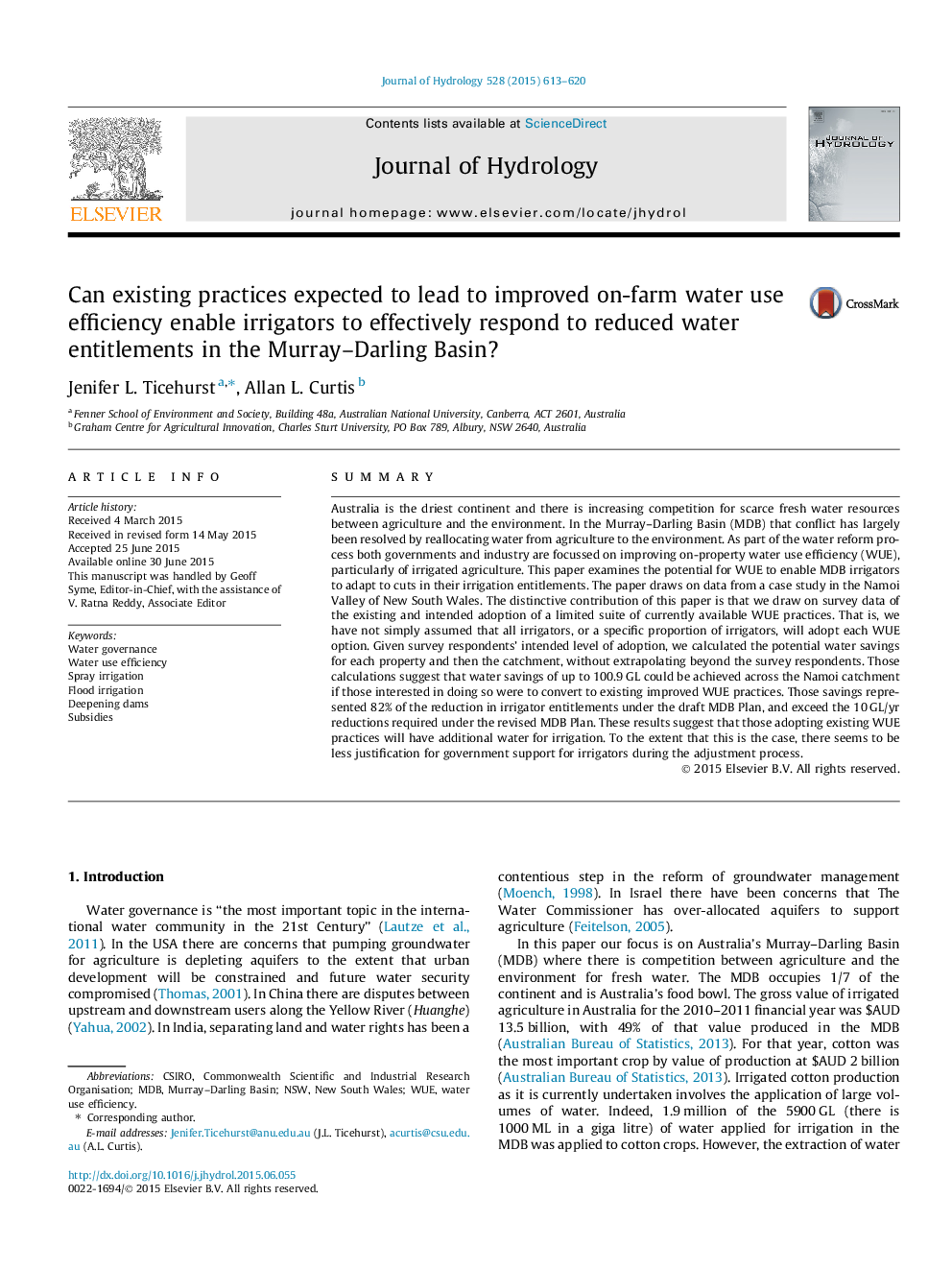| کد مقاله | کد نشریه | سال انتشار | مقاله انگلیسی | نسخه تمام متن |
|---|---|---|---|---|
| 6410929 | 1629922 | 2015 | 8 صفحه PDF | دانلود رایگان |
- Calculations include only irrigators interested in water use efficient changes.
- Up to 100.9Â GL/yr could be saved across the Namoi catchment.
- Only 10Â GL/yr water savings is required under the Murray Darling Basin Plan.
- Those adopting these practices are likely to have additional water for more irrigation and income.
- If there's private benefit, to what extent should the government support adoption?
SummaryAustralia is the driest continent and there is increasing competition for scarce fresh water resources between agriculture and the environment. In the Murray-Darling Basin (MDB) that conflict has largely been resolved by reallocating water from agriculture to the environment. As part of the water reform process both governments and industry are focussed on improving on-property water use efficiency (WUE), particularly of irrigated agriculture. This paper examines the potential for WUE to enable MDB irrigators to adapt to cuts in their irrigation entitlements. The paper draws on data from a case study in the Namoi Valley of New South Wales. The distinctive contribution of this paper is that we draw on survey data of the existing and intended adoption of a limited suite of currently available WUE practices. That is, we have not simply assumed that all irrigators, or a specific proportion of irrigators, will adopt each WUE option. Given survey respondents' intended level of adoption, we calculated the potential water savings for each property and then the catchment, without extrapolating beyond the survey respondents. Those calculations suggest that water savings of up to 100.9Â GL could be achieved across the Namoi catchment if those interested in doing so were to convert to existing improved WUE practices. Those savings represented 82% of the reduction in irrigator entitlements under the draft MDB Plan, and exceed the 10Â GL/yr reductions required under the revised MDB Plan. These results suggest that those adopting existing WUE practices will have additional water for irrigation. To the extent that this is the case, there seems to be less justification for government support for irrigators during the adjustment process.
Journal: Journal of Hydrology - Volume 528, September 2015, Pages 613-620
